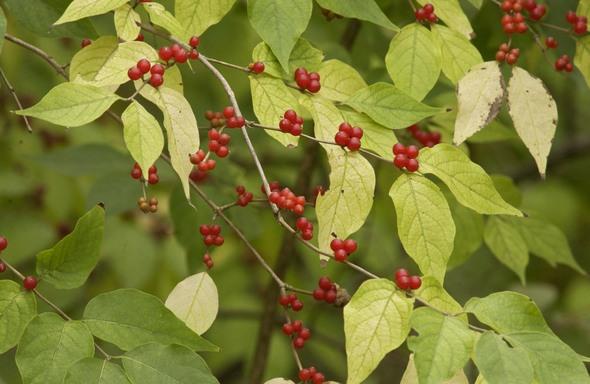
Xplor reconnects kids to nature and helps them find adventure in their own backyard. Free to residents of Missouri.


































Stay in Touch with MDC news, newsletters, events, and manage your subscription

Xplor reconnects kids to nature and helps them find adventure in their own backyard. Free to residents of Missouri.

A monthly publication about conservation in Missouri. Started in 1938, the printed magazine is free to residents of Missouri.


Kansas City, Mo. – Bush honeysuckle is an enemy of native trees and plants, an invasive species that volunteers and public agencies spend money and manpower battling. Missouri Department of Conservation (MDC) biologists and other public land managers work to control the invader because it suppresses native plants valued for beauty and wildlife habitat. Private land owners can help, especially in late fall or early winter when bush honeysuckle is easily spotted and removed or cut and treated with herbicide.
Bush honeysuckle arrived in America from Asia as a landscaping plant. Like many other non-natives, the shrub escaped into wildlands. Birds eat the berries and spread the seeds, although, the berries are not very nutritious for birds. The shrub leafs out earlier than most natives, and its leaves stay green long after other natives have grown dormant, which gives it a competitive advantage over natives. Thick stands cut off sunlight that young trees and wildflowers need to grow, and scientists also believe the shrub may produce a chemical that suppresses other plants.
Bush honeysuckle can grow into dense, tall stands that that people have trouble walking through. Natural areas are harmed by the lack of plant diversity needed for butterflies and birds. Identifying new bush honeysuckle growth in early winter and treating can prevent major problems from the invader later in yards, acreages and public green space. Once started, bush honeysuckle is hard to stop. Much of the green still showing in Kansas City’s wooded areas is due to invasive bush honeysuckle.
But bush honeysuckle’s advantage of staying green later also offers an opportunity to battle it. The plant’s active state also makes it susceptible to treating its foliage with herbicides. Because native plants are dormant, they won’t uptake the chemical and damage to them will be minimal.
Cutting the honeysuckle and spraying the base with a glyphosate solution, such as Roundup, can be effective. The stumps should be sprayed immediately after cutting. Large stands with green foliage can be treated with mist sprayers. Seedlings can be pulled up as they are shallow rooted. Prescribed burns are sometimes used where appropriate.
For more detailed information about identifying and controlling bush honeysuckle, visit http://on.mo.gov/2gCOdYK.
Kansas City Wildlands, a non-profit service program at Bridging the Gap, has developed a Honeysuckle Academy training program to help homeowner associations or other groups battle the invasive species in their neighborhood. For information, call (816) 561-1089.
Many native plants can be used in landscape plantings that provide far more benefits for wildlife without invasive species problems, such as American beauty berry, fragrant sumac, vernal witch hazel, wild plum, and choke cherry. For information about native plant alternatives, visit http://GrowNative.org.